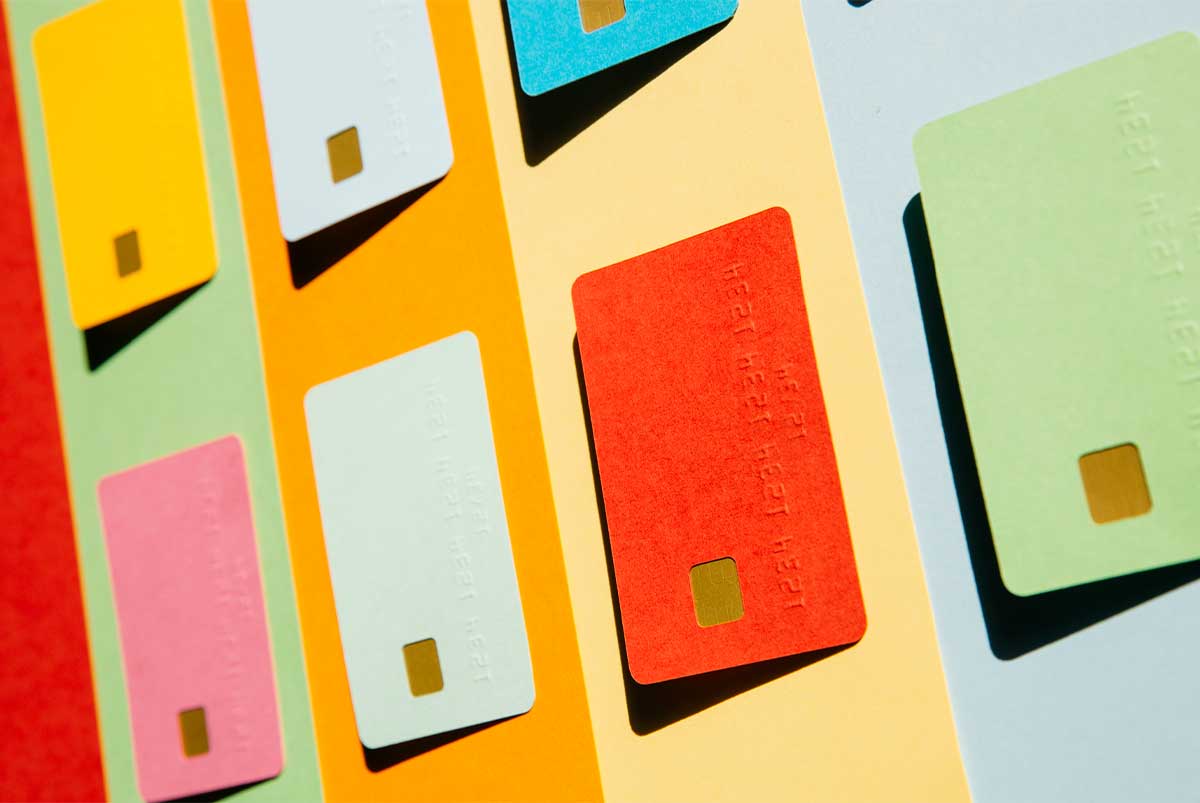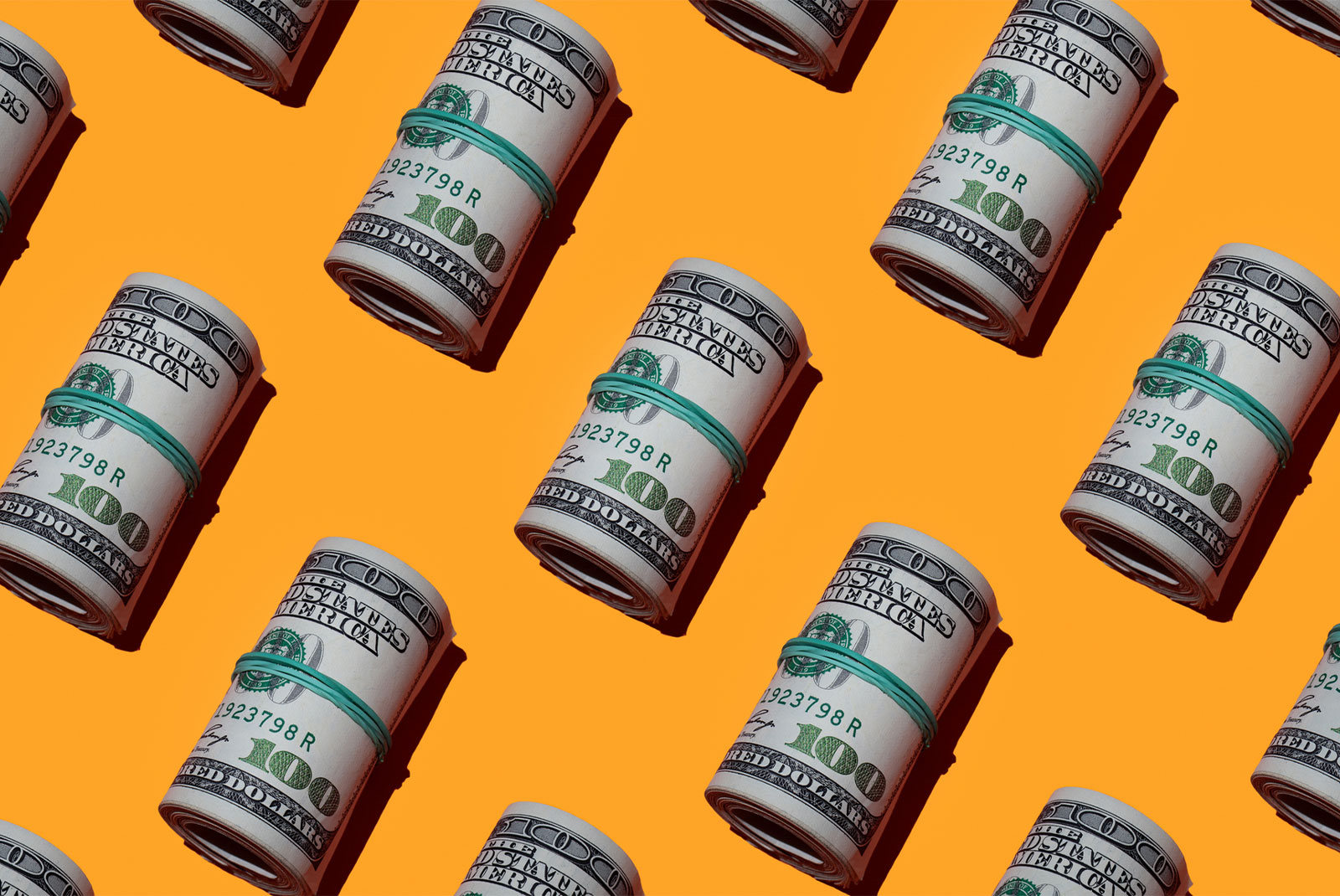If you’re just getting started on your financial journey, you probably have one credit card you use for everything. Let’s call it your ride or die. Or maybe you’re thinking of applying for your first card. A credit card bestie to help finance your life.
According to an Experian™ review of national credit report data, the average number of credit cards Americans have varies by generation. Gen Z has an average of two credit cards. Millennials have three, and Gen X has 4.[1]
While you can own multiple credit cards, multiple credit cards aren’t for everyone. In fact, one well-managed credit card is far better for your credit score than several poorly managed cards. But, if you can pay all your credit card bills on time and in full, there is a case to be made for the advantages of owning multiple credit cards.
The short answer is that there is no right answer to how many credit cards you should have. But we can walk you through a few factors to help you evaluate your financial health and decide how many – if any – are right for you.
Is It Good or Bad for My Credit Score To Have Multiple Credit Cards?
Having multiple credit cards on your credit reports is generally better for your credit scores than having one or no cards. But multiple credit cards can positively and negatively affect your credit score.
Positive effects on credit
Multiple credit cards can help your credit scores in many ways, most importantly with credit utilization. Credit utilization is important because it’s one of the key factors used by credit scoring companies to calculate your credit scores.
Here’s what credit utilization looks like IRL: If you have a credit card with a $3,000 credit limit and you spend $2,500 on the card, your credit utilization is 83%. Now, let’s say you add a second card to the mix and that card’s got a $2,000 credit limit. With your brand-new $5,000 credit limit, your credit utilization will drop to 50%. To get your credit limit down to 30% (the recommended percentage of credit usage), you either have to increase your credit limits or get a third credit card.
While you should aim to get your credit utilization to 30%, single-digit utilization (9% or lower) is best to maximize your credit scores.
Now, does opening a credit card come with some downsides? Yes. But, if you’re only applying for one card every few months, the negative effects are minor – especially when you compare them to the potential positive effects.
- Account variety: A mix of positive credit accounts on your credit reports, like credit cards and installment loans, can help boost your credit scores and shows that you can handle different types of debt.
- Positive payment history: A record of on-time payments will improve your scores and help offset any late payments.
- Average age of accounts: A new card will initially lower the average age of your credit accounts. Over time, it will raise the average account age.
Negative effects on credit
- A hard inquiry: Every credit card you apply for will require a hard inquiry on your credit reports. Each hard inquiry will trigger a slight dip in your credit scores.
- Credit score drop: New credit accounts for 10% of your FICO® scores. Opening new credit accounts will bring your scores down – but the drop is temporary.
Average age of accounts: The average age of accounts makes up 15% of your FICO® scores. A new account will lower your average account age, but this effect goes away over time.
How Many Credit Cards Do You Need?
So, how many credit cards do you need? If you don’t have any credit cards, consider starting with just one. Once you’ve gained more experience managing a card, consider applying for two or more.
There’s no set number of credit cards you must (or must not) own. The right answer will depend on your lifestyle, ambitions and level of financial responsibility.
If you can use every card you own responsibly, you can benefit from using as many credit cards as you deem necessary.
If you don’t think you’re ready to deal with the responsibility of owning a credit card, the right number of credit cards for you is likely zero.
If you’re new to credit cards
To get comfortable with credit cards and build your credit history, consider applying for one card.
Your first card doesn’t have to be a rewards card, but if you have a good credit score and qualify for one, consider starting there. If a secured card or store card feels more manageable, consider starting there.
Take at least a few months to get comfortable with your new card. Learn how credit cards work and how to make consistent, on-time payments.
Exercise self-control when you spend and don’t buy anything you wouldn’t normally buy.
Spoiler alert: A credit card isn’t free money. You’ll have to pay everything back – and usually with interest.
Once you’ve gained more experience managing a credit card, you may want to start thinking about expanding your credit card collection to earn more rewards and take advantage of more valuable benefits.
If you’re experienced with credit cards
If you can handle multiple cards, there are plenty of reasons why you might want to apply for more. When you know how to use credit cards responsibly, there is no limit to the number of cards you can have. The right number of cards is the number you can manage.
If you only have one card, you may be missing out on rewards and benefits that could save you some money and make your life more comfortable.
Are you only earning 2% cash back on groceries when you could be earning 6%? Are you flying all over the U.S. and find yourself staring enviously into airport lounges? Are you constantly spending money at the same retailer?
A different credit card could benefit you.
The Multiple Benefits of Multiple Credit Cards
The benefits of multiple credit cards extend far beyond improving your credit scores. You can also save money and be more prepared for emergencies.
You might want a cash-back card for everyday shopping and another card for your travel expenses. Maybe you’re looking for a new balance transfer card to get some debt off a high-interest card. Either way, there’s likely a credit card out there to suit your every need.
Backup in case of a compromised card
Whether you’re a victim of identity theft, fraud or your card was flagged for unusual activity, if one card gets declined and you have multiple cards, you’ll have the security of knowing you can use another card.
Ready for any emergency expenses
Picture this: You’re close to maxing out on your credit card. Your checking account balance is low, and you just got hit with an out-of-the-blue emergency expense. If you have a credit card you only use for emergencies, you’ll know that you won’t have to stress out over covering a surprise bill.
Access to different reward types
Credit card rewards come in all shapes and sizes. You can get a signing bonus, cash back, air miles or points. If you’re a frequent flier, look for a card with a miles program. If you stay at a lot of hotels, find a hotel rewards card. If you just want to save money, look for cash-back cards. Multiple cards with different rewards is a savvy way to maximize rewards.
Optimize your spending
Many credit cards are designed for specific purchases. With some cards, you can get up to 5% cash back in certain spending categories.
For example, maybe one card gives you 5% cash back on groceries, but 1% back on gas. In this case, it might make sense to get a second card that gives you 4% back on gas.
Some cards rotate the cash-back category every month or quarter so you can earn high cash-back rewards on different purchases throughout the year. Pay attention to the rotation schedule and use the card in those higher-earning categories to optimize your cash back.
Look for cards that offer high cash back in categories you spend a lot of money on. Use each card for its specific purpose during the right time to maximize your rewards.
Potential Issues With Multiple Cards
There are benefits and drawbacks to having more than one card. But if you can manage your credit cards responsibly, you can minimize the drawbacks.
Managing multiple billing cycles
Multiple credit cards usually equal multiple billing cycles. You’ll need to stay on top of all your payments. If you need some incentive, just keep in mind that payment history makes up 35% of your FICO® credit score.
Pro tip: Consider setting up autopay and select to pay the entire balance every month for each card.
Automatic payments will ensure that you always pay on time. Paying the entire balance will keep you from accruing interest on purchases, which can help keep your debt under control.
Having too much spending power
If you’re an overspender, the temptation may be too great with multiple cards at your disposal. If you can’t resist a shopping spree or spending above your means, multiple credit cards may not be right for you.
Spacing out credit card applications
Applying for multiple credit cards in a short time span can send red flags to lenders and it can hurt your credit score. Make sure you space out your credit applications to avoid damaging your credit score.
To stop consumers from applying for a card, collecting a signing bonus, and then canceling a credit card, many credit card issuers have rules about how many credit cards you can apply for during a specific period.
Planning future large purchases
If you’re planning on making a large purchase that requires a high credit score – like buying a car, financing a house or signing a lease – you should hold off from applying for a new credit card within six months of the purchase.
Remember, applying for a credit card can cause your credit score to drop, which could affect any big financial moves you’re planning.
What Are the Different Credit Cards and Benefits You Should Consider?
Whether you’re looking for your first credit card or looking to expand your credit card collection, you should have a basic understanding of the different types of credit cards. There are four major credit card types.
Credit building cards
Credit building cards are a great way for people just starting on their financial journey. The cards can help you learn how to manage a credit card while building credit. There are two primary types of credit building cards: secured credit cards and student credit cards. Both have low or no credit score requirements.
- Secured credit cards: Secured cards require a security deposit. The deposit usually establishes the card’s maximum credit limit. If you manage the card well, you can get the deposit back after your credit score has gone up by a few points.
- Student credit cards: Student cards are designed to help college students start building credit. Student cards may come with a low APR or signing bonus, but typically don’t offer rewards programs.
Rewards cards
These are the credit cards that typically come to mind when you think of credit cards. Reward types are typically broken down into three categories: points, air miles and cash back. The type that works for you will depend entirely on your lifestyle and your spending habits.
Balance transfer or large purchase cards
If you have a lot of credit card debt, you should consider a balance transfer card. If you need a card to charge a large purchase, you should consider getting a card with a low interest rate. Balance transfer or low-interest cards have low or 0% APRs for a brief period that can help you to either refinance your credit card debt or finance a large purchase.
Store cards
Major stores offer store cards to reward loyal customers and keep them coming back. The cards typically have high APRs but may offer cash back or other rewards on purchases. There are two types of store cards:
- Closed-loop store cards: Closed-loop cards can only be used at the store(s) owned by the retailer that issued the card.
- Open-loop store cards: Open-loop cards operate like standard credit cards and can be used to make purchases almost anywhere.
One May Be the Loneliest Number
You won’t get any judgment from us if you stick with one trusty card. But there are benefits to having multiple cards, including potentially lowering your credit utilization rate and earning more (and different) rewards. Not to mention that you’ll always have a backup in case you can’t use the other card, and you’ll be able to maximize your cash back by choosing different cards for different rewards.
Even if you’re satisfied with the cards you have now, there may be a great offer out there that you can take advantage of. Some of the most attractive cards provide big signup bonuses and fancy travel perks, which can put some cash back into your wallet or let you travel in style. If you’ve perfected managing one credit card, why not give it a friend – or three?
The Short Version
- Having multiple credit cards can help your credit scores in many ways, most importantly with credit utilization
- The average number of credit cards Americans have varies by generation. Gen Z has an average of two credit cards. Millennials have three, and Gen X has four.[1]
- There’s no set number of credit cards you must (or must not) own. The right answer will depend on your lifestyle, ambitions and level of financial responsibility
Experian™. “What Is the Average Number of Credit Cards per US Consumer?” Retrieved April 2022 from https://www.experian.com/blogs/ask-experian/average-number-of-credit-cards-a-person-has/




